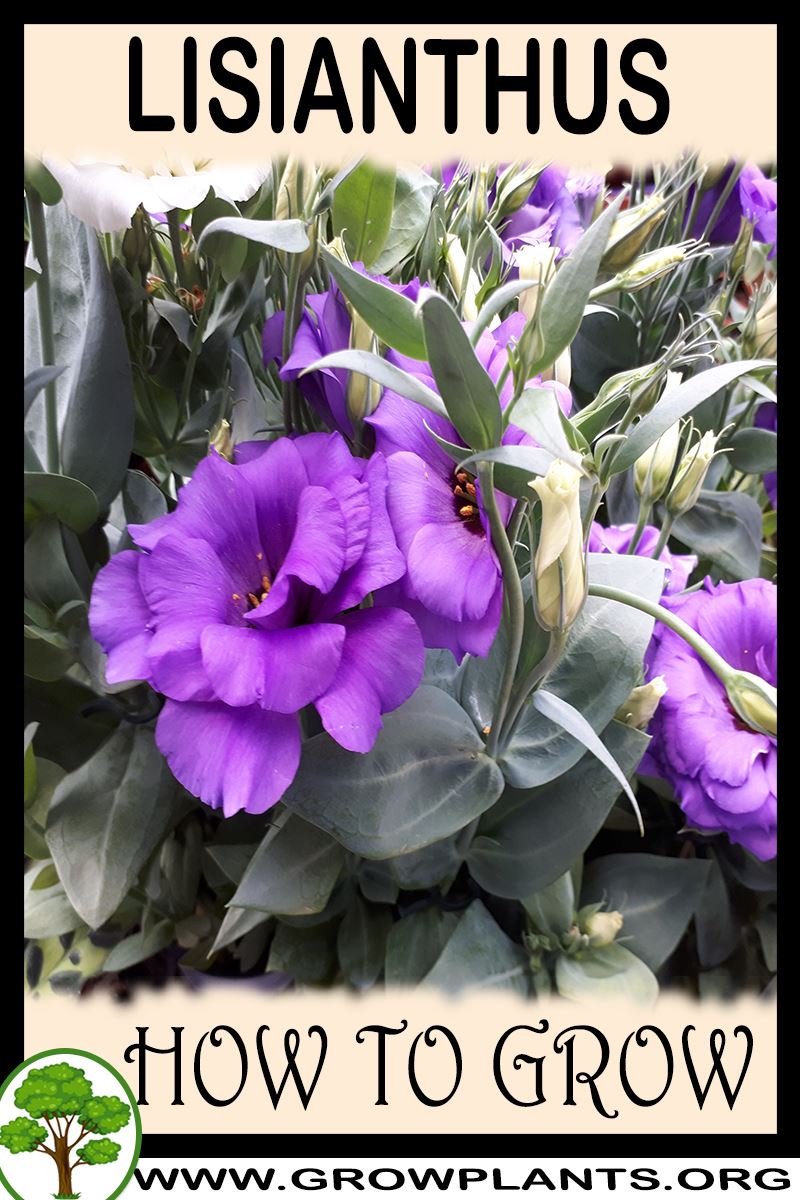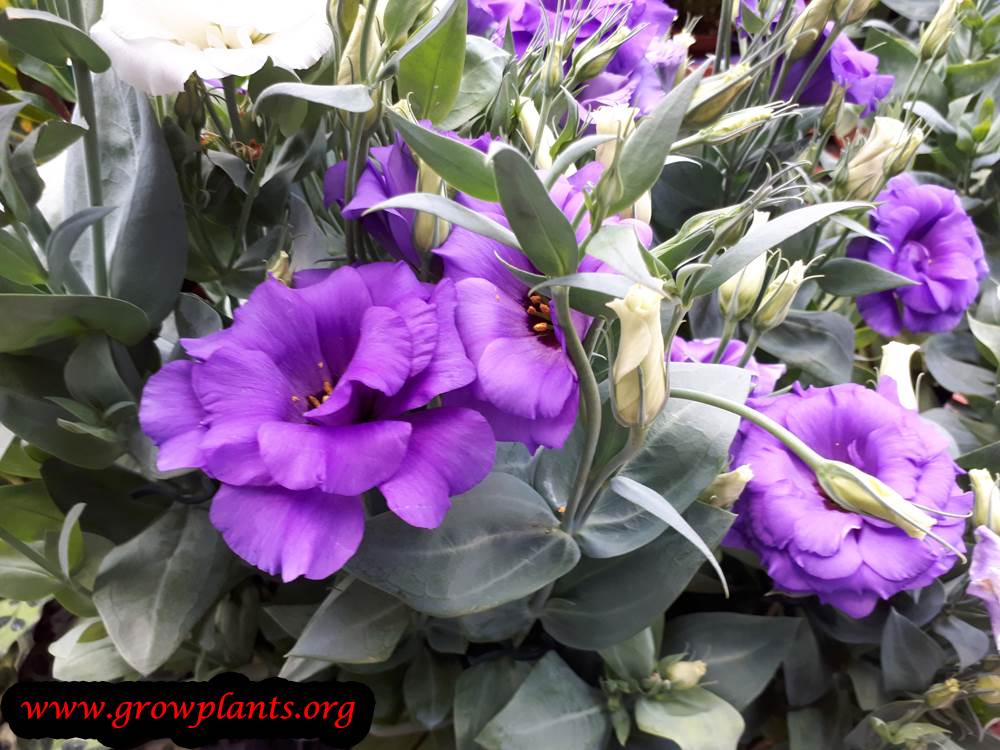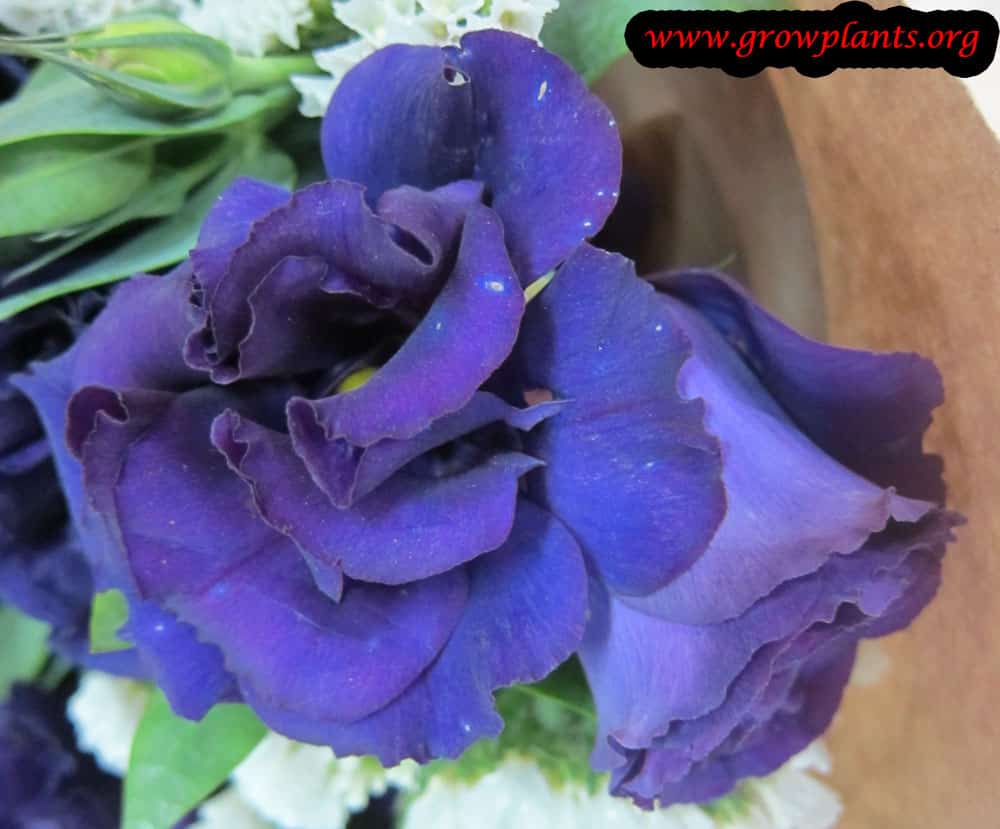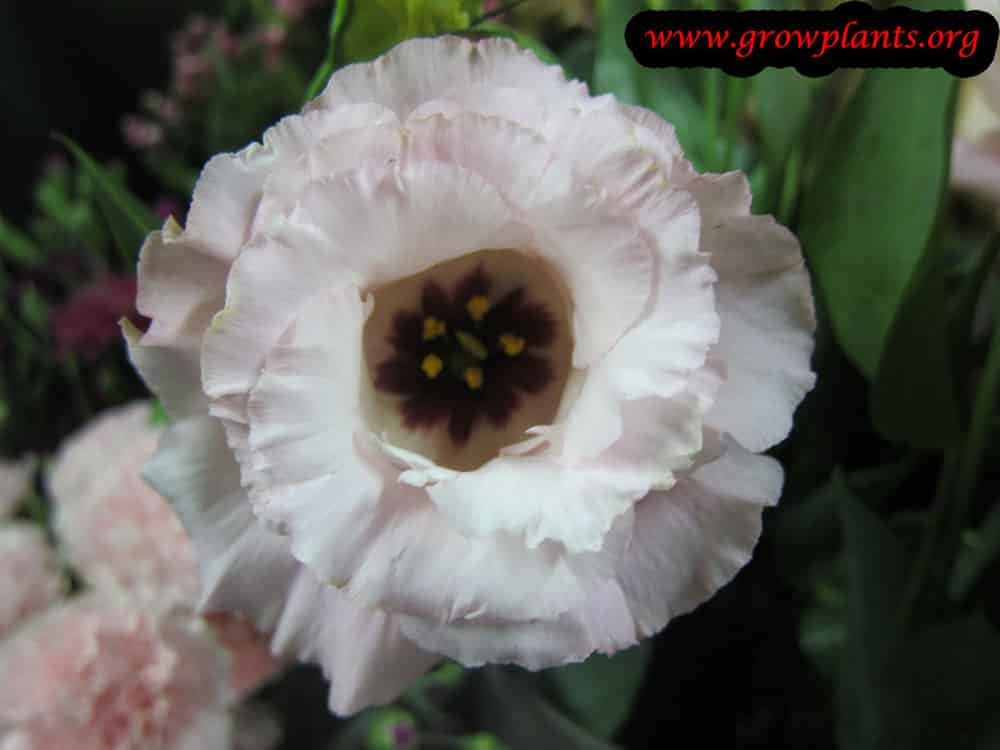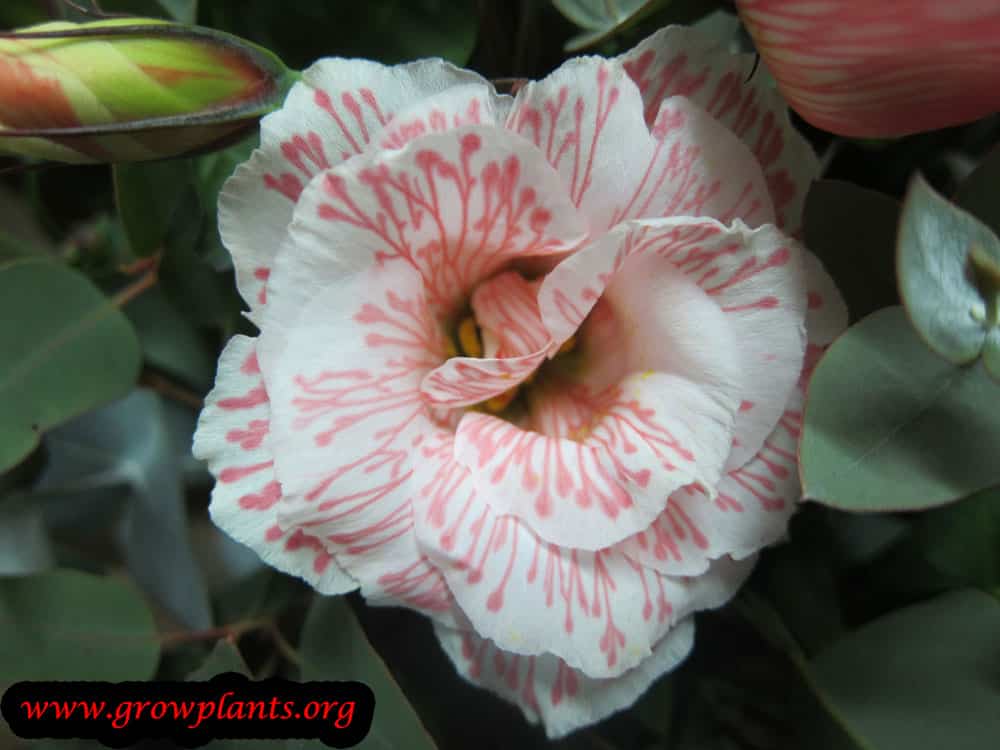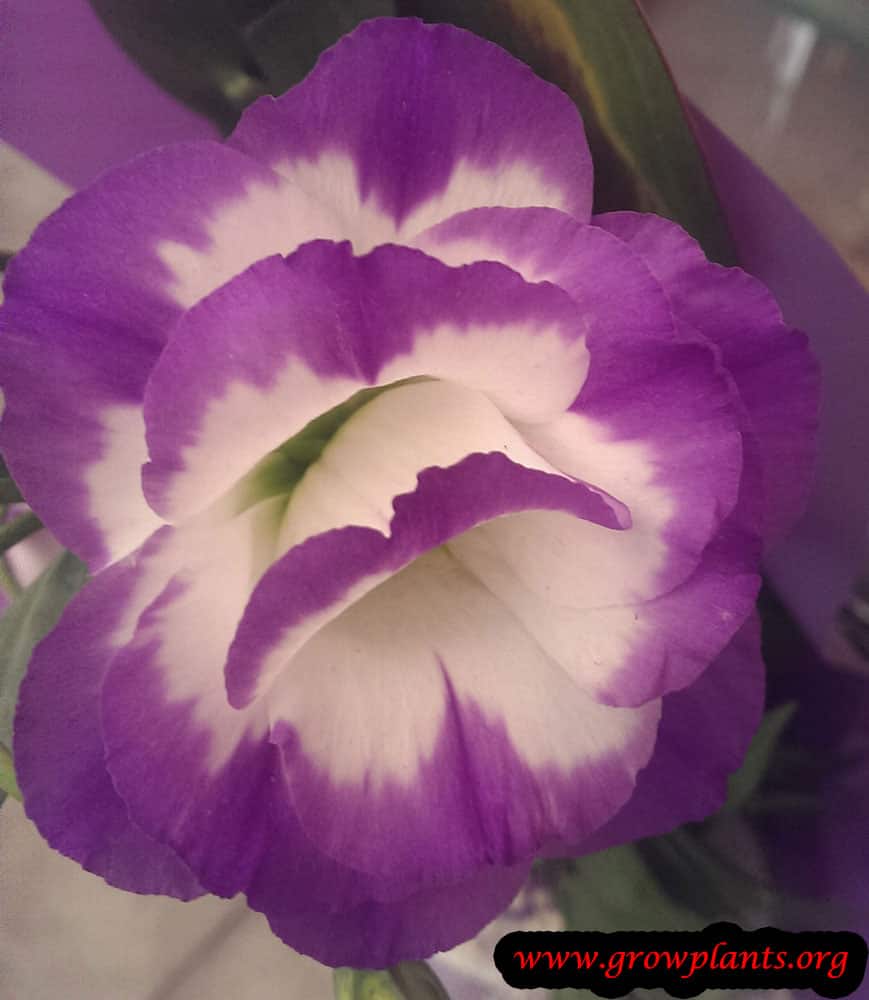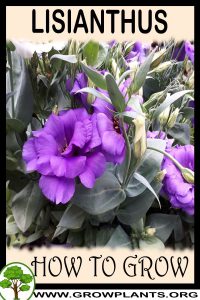
Lisianthus grow and care – herbaceous of the genus Eustoma also known as Lisianthus flowers or Prairie gentian, Lisianthus annual or short perennial evergreen plant, used as ornamental for flowers that can be used as cut flower plant, can grow in temperate, mediterranean, desert, subtropics or tropics climate and growing in as perennial hardiness zone 10-11 and as annual hardiness 2-10a or 12-13.
Leaves color green in acuminate shape.
Lisianthus flower
Flower color can be: blue, purple, pink, green, red, yellow, white, can be more than one color mostly white and purple or white and pink and mostly the inner part is dark, color can be dark strong color for example dark purple and dark pink, the shape is bell shape, can be single, double or full flower.
Lisianthus plants for sale – Seeds or Plants to Buy
Requirements and condition for Lisianthus plant – growing and care:
Well drained soil, moist, slightly acid to neutral, mulch, dead leaves, rich soil and organic matter
How to care for lisianthus
What is the best way to start growing?
Plant / Seed – explanation bellow / Seedlings / Cutting – care
Is it necessary to graft or use vegetative reproduction?
No, but it’s hard to start from seeds and easier from cutting
Difficulties or problems when growing:
Sensitive
Planting season:
Spring to autumn, better in hardiness zone 2-10a as annual plant in spring ,hardiness zone 10b-12 spring to autumn if planted as annual in spring as perennial especially in places without cold winter possible in the summer to autumn and if summer it’s hot like in desert autumn or spring and in the right condition can grow as perennial, in tropical better in the dry season
Pests and diseases:
Leaf miner, aphids, fungal (increase in wet soil)
Pruning season:
All year
How to prune:
Dead leaves and flowers( better to cut the flowers before fully dead because can increase the amount of flowers also possible to cut them for cut flower when almost fully bloom, than it will increase even more the amount of flowers
Size of the plant:
20-90 cm, 8-36 inches
Growth speed in optimal condition:
Fast growing / Medium growing
Water requirement:
Average amount of water, overwater will kill the plant, better to put the water directly on the roots, if grown in tropic be aware water will cause problem better dry tropic, this plant like to grow next to water steam with dry season, that means the plant like water on the roots not on the flowers or the leaves and rain will destroy the flowers try to take care that the plant will be in place without direct rain like under a tree or other kind of shelter that still will give the plant access to full sun.
Light conditions in optimal condition for growing:
Full Sun, in desert less than full sun with afternoon shade
Is it possible to grow indoor as houseplant?
No, indoor growing possible only on windows, the plant require a lot of sun
Growing is also possible in a planter /flowerpot / containers:
Yes – need to care that the pot bigger 40% from the root ball, moist and well drained soil and prune dead flowers
Blooming information
Bloom season:
Spring / Summer / Autumn
General information about the flower
Bell shape flowers in the colors blue, purple pink, green, yellow, red or white, can be more than one color mostly white with purple or pink mostly the inner part is dark
How to grow Lisianthus from seed
Sowing requirement:
10-22C (50-71F) and before put in in refrigerator,
be aware that it’s hard to start from seeds and if it’s above 23C 75 it’s go back to dormant
peat soil 30 with vermiculite and better that the seeds will be cover with vermiculite,
possible to grow in a pot and to cover the pot with plastic wrap that will keep high humidity and moist, need to pour the water from bellow and not open the pot until transplant it to bigger pot or soil, a lot of light possible to put it indoor under light will give better result
in hot spring location better to sow in late winter and it will be hard to start from seeds
Saving seeds until sowing:
dry and dark location in refrigerator
Sowing season:
late autumn to early winter, better to put the seeds before in refrigerating
Planting spacing:
Separate pots
Depth of Sowing:
On the soil or 1mm deep with light cover
Conditions for seeds germinate:
High humidity, moist soil temperature not above 23C
Watering requires for Seeds:
Average amount of water
Germination time:
2-4 weeks (but depend the temperatures and light hours)
Condition of seedling:
After 2-5 leaves (not seedling leaves possible to transplant it to the soil or bigger pot) above 15C (59F)
Do the seeds require burying?
Yes, especially in hot climates
Time to bury the seeds:
2-3 months
Chilling hour’s methods:
Take small nylon bag put inside sterile peat soil or better vermiculite that was soaking in water ( put few minutes in the microwave) close the nylon bag well and cover it with foil aluminum and put in refrigerator not in the coldest area, check it first few days that there is enough water in the nylon bag if yes reduce the checking and don’t touch it until the sowing time.
Scientific name:
Eustoma
Alternative names: Prairie gentian, Bluebell
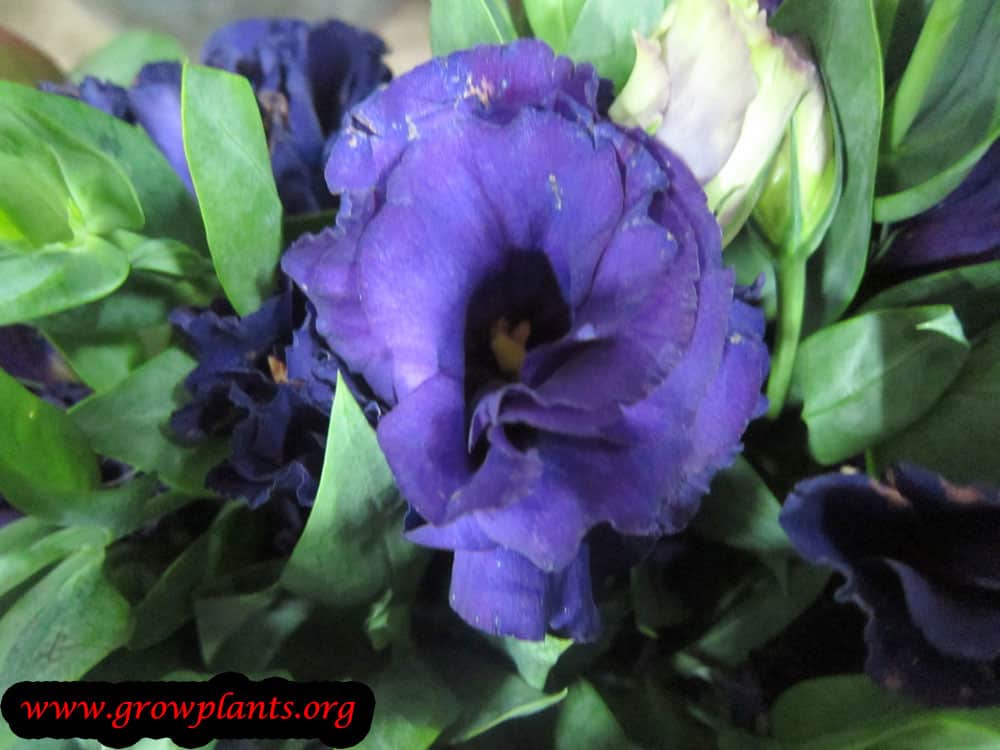
Categories
| Blooming Seasons |
|
|---|---|
| Flower colors |
|
| Climate |
|
| Ornamental parts |
|
| Plant growing speed |
|
| Plant life-form |
|
| Plant Uses |
|
| Planting Season |
|
| Plants sun exposure |
|
| Watering plants |
|
| Hardiness zone |
|


